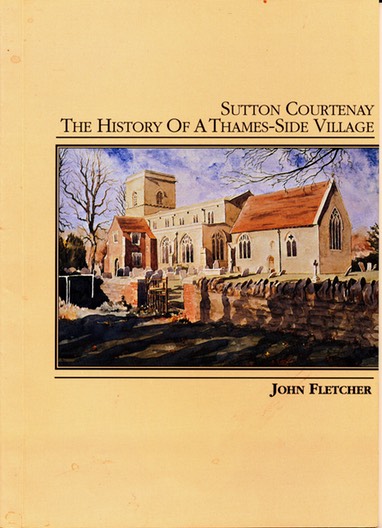Sutton Courtenay, situated as it is on the banks of the River Thames, has been settled since earliest times. The river provided a source of fresh water while the surrounding rich alluvial soil, deposited on top of sand and gravel beds, was ideal for agriculture.
The village is located at an intersection where the small River Ginge, which flows down from the Berkshire Downs, meets the River Thames. Around 4000BC Neolithic settlers set up an encampment a mile or so to the west of the village which is thought to have been a ceremonial site. Later there are signs of many Iron Age farmsteads in the area. Later still, the Romans occupied the area and a Roman villa has been excavated close to where the Neolithic settlement had been. A couple of miles to the East, on the banks of the River Thames near the village of Appleford, there was a second Roman villa which yielded up a 4th century hoard of pewter hidden in a well. Important Anglo-Saxon settlements have been excavated.
The first written record of the village was in AD688 when the king of Wessex, King Ine, endowed the new monastery of Abingdon with the Manor of Sutton, as the village was then known. “Sutton” is a corruption of Sudtone or South Town, a town to the south of Abingdon.
In AD801 Sutton became a Royal vill with Abingdon monastery retaining the church and the priest’s house. This was more than 300 years before the present Norman church was built and suggests that there was an earlier Saxon church here, but no trace of it has been found. The first recorded priest was Aelewin in 1091 which is again indicative of an earlier church since the present church was not started until the latter half of the 12th century when the lower two sections of the tower were built, along with the central section of the nave and the chancel. The lancet windows in the North wall of the chancel date from this period.
The Domesday Book of 1086 records that King William I (the Conqueror) held the Manor of Sudtone and that it contained three mills, 300 acres of river meadows and extensive woodlands.
Fifteen years later in 1101, King Henry I sent his wife Matilda, a Scottish princess, to his Royal vill at Sutton for her first confinement. It seems that the child died in infancy. Between September 1101 and February 1102 Henry issued three Royal Writs from Sutton. Their second child, a daughter, may also have been born here, and she grew up to marry the Holy Roman Emperor and became the Empress Matilda. Her second marriage to Geoffrey of Anjou led to the birth of Henry II, the grandson of Henry I.
In adult life Henry II had a friend Reginald de Courtenay, a French diplomat who hailed from the town of Courtenay, South East of Paris. Between 1175 and 1179, just around the time when the church building began, Henry II signed a charter granting the Manor of Sutton to Reginald de Courtenay. From that date on the village changed its name to Sutton Courtenay.
A list of significant dates and events in the village can be found here.

For a more detailed history of Sutton Courtenay see “Sutton Courtenay - The History of a Thames-side Village" by John Fletcher (1990). Unfortunately this is currrently (2021) out of print.
